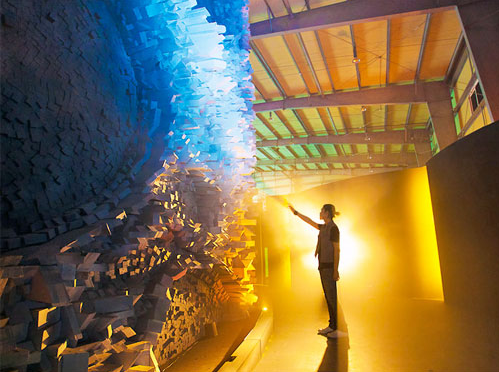The root of virtual reality can be traced back to the 1860s, but it is now that virtual reality or immersive multimedia has taken the us by storm. Virtual Reality, is of course, technology that simulates a full blown 3D world that a user can manipulate and explore while feeling as if he/she were in that world itself. There are lots of devices and applications today consisting of this program. In a VR device, 3D images appear to be life-sized from the perspective of the user. And the device has the ability to track a user’s motions, head and eye movements to be precise and accordingly adjust the images on the user’s display to reflect the change in perspective.
What The Future Holds

Demands of devices like Oculus Rift and Project Morphues has shown us that the future of virtual reality lies in video games. Especially now that a new first person space exploration game is being launched that will take you above Earth. Design studio Opaque Multimedia unveiled Earthlight, an upcoming first-person space exploration game. Using Oculus Rift, a virtual reality headset that is expected to debut this year, and Microsoft Kinect 2, a motion sensor, Earthlight. Its best part is that it lets you play an astronaut aboard the International Space Station, 268 miles (431 km) above the Earth you’re actually standing on. It looks beautiful and disturbing at the same time.But then some may differ, virtual reality may mean more than just a video game device.
Plus with HoloLens, that is Microsoft’s first venture into the virtual reality world, we know virtual reality is the next big thing. Though it has to safe some tough competition against Oculus Rift and Sony’s Project Morpheus. The headset’s transparent visor projects digital constructs onto a real-world field of view. This product is releasing at the end of this year, and the surprising factor is it is rumored to be priced cheaper than the Oculus Rift. Some of the features of HoloLens include a potential for streaming video to external screens.
In other aspects of virtual reality, the phones of the future may look something like an Oculus Rift fused with an iPhone.In the future, our smartphones may turn into a smarter phones where the phone’s hardware and software will work in seamless harmony. Mobile virtual reality will be the ultimate input-output device and creative medium. Our smartphones will become more like our personal assistant and understand our needs, habits, likes, dislikes etc. And with virtual reality it has the potential to take that one step further, allowing users to explore places and objects without having to move around to fetch our phones. There’s more to virtual reality than this.
Nordstorm, a leading fashion retailer used virtual reality’s spatial realism to help an internal team improve the look and feel of its stores. According to Nordstorm, they experimented with virtual reality to help a fabrication team that was building a demonstration of a store façade. It helped them understand the space in terms of proportion and scale in relation to its environment. And the DeepStream Virtual Reality is developing a virtual reality as a healthcare tool that works with biosensors and biofeedback to help relieve chronic pain and to help people deal with phobias.
Virtual Reality has been adopted by the military too. It is being used for training purposes. This is particularly useful for training soldier in situation specific combat scenarios. It enables them to get a hands on experience of dangerous situations without the risk of a serious injury or death. It is also used to treat post-traumatic stress disorder within the soldiers. Soldiers suffering from psychological conditions post a war can learn how to deal with their symptoms in a safe environment.
Challenges
The big challenge in the field of virtual reality is developing better tracking systems, finding more natural ways to allow users to interact within a virtual environment and decreasing the time it takes to build virtual spaces. And also there is a psychological set back that follows, some psychologists are concerned that immersion in virtual environments could psychologically affect a user.
They suggest that the virtual reality systems that place a user in violent situations, such as the ones in the games, the user is exposed to gore, bloodshed, violence and that could result in the user becoming desensitized. In effect, there’s a fear that such entertainment systems could breed a generation of sociopaths. Studies indicate that people can have real physical and emotional reactions to stimuli within a virtual environment, and so it’s quite possible that a victim of a virtual attack could feel real emotional trauma, especially when the realm inside feels so real. Whatever it is, everything comes with its pros and cons and so does virtual reality. With virtual reality taking over in so many spheres, its easy to say that virtual is becoming the next big thing in technology.